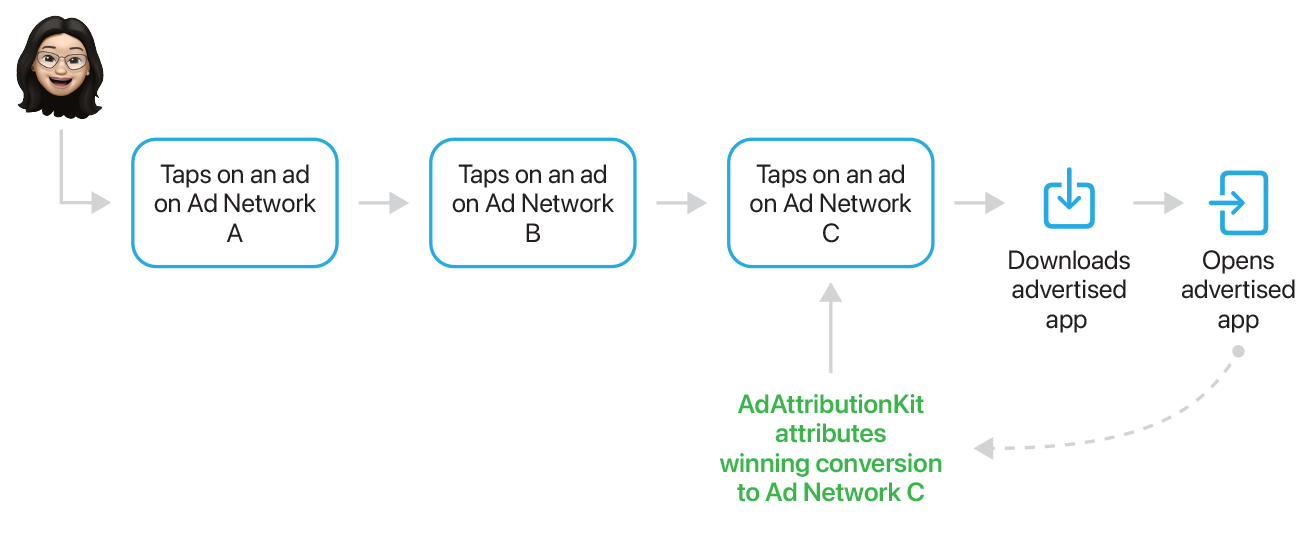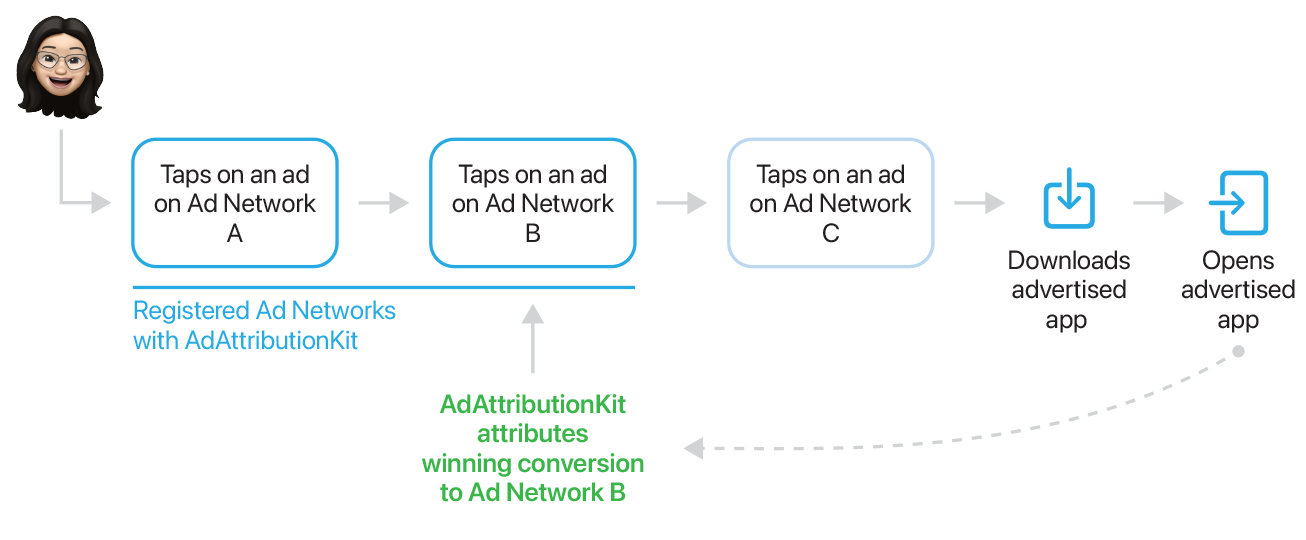Using AdAttributionKit to measure app ad performance
AdAttributionKit is the free attribution solution Apple has provided to the mobile advertising industry since 2018 — providing ad networks and developers with insights into the performance of a wide variety of app campaigns that may be running across various registered ad networks, including the number of downloads and other actions users take within apps after downloading, all while respecting user privacy. These insights help developers allocate budgets to the marketing channels that result in the most user engagement. Any ad network can register for AdAttributionKit to help developers evaluate the effectiveness of their marketing channels.
AdAttributionKit has protections in place to ensure that user privacy is respected, including limits to the amount and type of information that is shared back with advertisers. These limits are in place because Apple doesn’t control the practices of other ad networks or third-party providers in terms of how they’re safeguarding user privacy. For example, Apple doesn’t control how other ad networks or third-party providers may build user profiles by inferring information about the user and device actions, and Apple doesn’t control the extent of the targeting criteria being offered to advertisers outside of our platform (which could include targeting by user interests and personal information). Apple also doesn’t control what other ad networks offer their users in terms of choices for when and how their information is used for advertising, along with the associated transparency of whether and how that information is being used.
AdAttributionKit does not track users and is engineered to limit tracking by third-parties.1 AdAttributionKit limits the data that is sent to advertisers and ad networks (known as a postback) by using crowd anonymity thresholds. At a high level, crowd anonymity sends less data in the postback when there are fewer conversions, to help prevent anonymized data being matched with a specific user. As the number of conversions increases, more data is sent back, while continuing to ensure that no individual user can be identified. To further protect privacy, a time delay between the conversion event (for example the app being opened) and the actual postback is implemented, reducing the ability to tie a specific postback to a device or user.
How AdAttributionKit works
With AdAttributionKit, click-through attribution occurs when a user clicks on an ad that takes them to that app on the Apple App Store, and proceeds to install the app. After the user opens the app, attribution data is sent. If a user clicks on more than one ad, the attributed click-through conversion will be assigned to the ad most recently clicked by the user. AdAttributionKit can only attribute a conversion amongst ad networks who are registered, so the more ad networks that join, the more accurate and useful the attribution data becomes.
As an example, a user may see and click on an ad from Ad Network A, Ad Network B, and Ad Network C, in that order. After the user clicks on the ad from Ad Network A and B, they don’t download the app. But after they click on the ad from Ad Network C, they download and open the app. If all three ad networks are registered with AdAttributionKit, AdAttributionKit will attribute this app conversion to Ad Network C, as it hosted the last ad that the user clicked before converting.

If Ad Network C is not registered with AdAttributionKit, AdAttributionKit will attribute the app conversion to Ad Network B as the most recent attributable ad clicked. In the absence of an ad network’s registration, AdAttributionKit will attribute the conversion based on its last known ad network interaction.

AdAttributionKit becomes more accurate and useful to developers in assigning the last-clicked ad if more ad platforms register and participate. Over the past several years, more and more developers have adopted AdAttributionKit to help inform their marketing campaigns’ effectiveness across multiple channels, and more ad platforms have registered with AdAttributionKit to help developers get greater visibility into how their marketing channels are contributing to their campaigns.
Measuring ad performance on the App Store